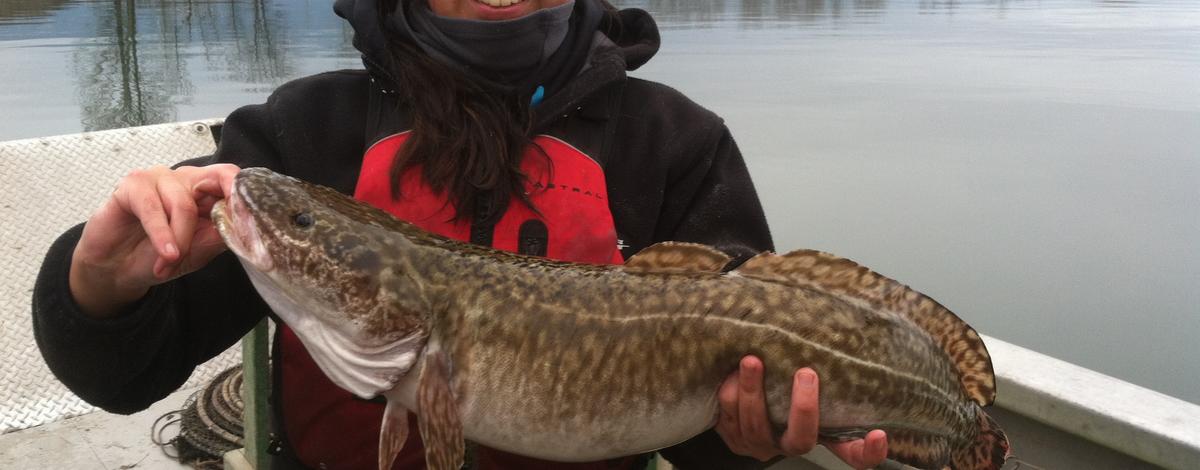Idaho anglers will once again have the opportunity to fish for and harvest burbot in the Kootenai River, its tributaries and Bonner Lake starting Jan. 1. The Idaho Fish and Game Commission recently approved fishing rules for 2019-21 that included a burbot season, allowing anglers to harvest six burbot per day with no size restrictions in those waters.
This new fishing opportunity has resulted from a collaborative effort to restore burbot by the Kootenai Tribe of Idaho, Idaho Fish and Game, the University of Idaho, fisheries managers from British Columbia and Montana, and local communities in the Kootenai Valley.
Burbot in the Kootenai River average about 16 to 20 inches long, but fish as large as 33 to 35 inches have been observed in surveys. Burbot are most active, and spawn, in the winter months, making it the best season to fish for them. Historical reports suggest that night fishing is often most productive, particularly on shallow flats where burbot tend to congregate for feeding and spawning.
Anglers targeting burbot typically use cut bait, dead shrimp, or worms hooked to a jig or fished from the bottom.
Burbot are also known by some anglers as “ling,” “ling cod” and “eel pout,” and they are native to the Kootenai River, but fishing has been closed in Idaho since 1992 because of low populations. In fact, the population was nearly lost, plummeting to only about 50 fish in 2004. Efforts to restore the native burbot population gained headway with the signing of a Burbot Conservation Strategy in 2005 led by the Kootenai Valley Resource Initiative, a community driven natural resource collaborative.
As a result, the declining population was reversed, and enough burbot now exist to reopen a harvest fishery while meeting conservation goals. Current estimates indicate there are 40,000 to 50,000 burbot in the Kootenai River. Restoration efforts for burbot are ongoing, with more burbot projected in coming year.
Many people contributed to this project, but key elements included development and operation of a burbot hatchery along with a series of habitat restoration projects by the Kootenai Tribe. University of Idaho researchers assisted in developing hatchery practices. British Columbia provided fertilized burbot eggs from Moyie Lake. Idaho Fish and Game biologists did annual population monitoring and research along with British Columbia and Montana. Much of the work has been funded by the Bonneville Power Administration as part of their fish and wildlife mitigation program.
Anyone with questions about the new burbot season can contact Idaho Fish and Game staff in the Panhandle Regional Office at (208) 769-1414.

